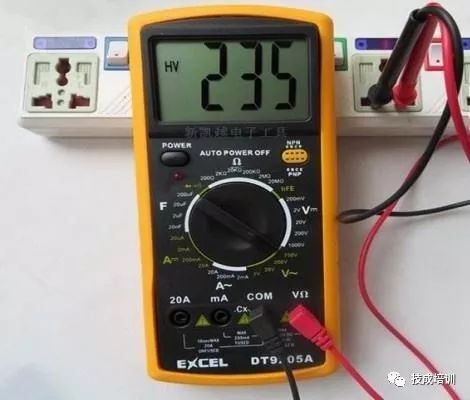A multimeter can be used to measure current, and when measuring current with a multimeter, it is important to distinguish between direct current (DC) and alternating current (AC). Below is an explanation using the Victory digital multimeter:
If you are repairing electronic circuit boards, you will mostly be measuring DC current, and most of it is low voltage and low current.
First, estimate the approximate current and select the appropriate measurement range. Insert the black probe into the COM port and the red probe into the appropriate port based on the current size, choosing the left mA small current range with a maximum of 200mA or the left 20A large current range.

Disconnect a point in the circuit that you want to measure and connect the multimeter probes in series with the circuit. If the current flows into the black probe, the meter will display a negative value. For very high currents, it is best to measure low voltage and small currents with the multimeter.
Next is measuring AC current. The method is similar to that of DC. For large currents, it is recommended to use a clamp meter, which is safe and convenient. Choose the appropriate range and clamp it on the conductor. The accuracy of a clamp meter is generally between 2.5-5 levels, which is sufficient.
1. Measuring DC Current
Insert the black probe into the “COM” port of the multimeter. If the current to be measured is relatively large, estimated at A-level, insert the red probe into the “10A” port and turn the knob to the DC “10A” position; if the current is relatively small, at mA level, insert the red probe into the “mA” port and set the knob to the DC mA range.
Adjust the range knob to the appropriate position for DC (A-) and, once adjusted, start measuring. Insert the multimeter in series with the circuit, maintain stable contact, and read the measurement data from the display screen.

2. Measuring AC Current
The measurement method is basically the same as that for DC current, but the range should be set to the AC range (A~). After measuring the current, remember to return the red probe to the “VΩ” port to prevent damage to the multimeter during the next measurement.
3. Important Points to Note
Multimeters are often used to measure voltage and current, so be sure to pay attention to the following:
1) When measuring voltage, do not connect in parallel with the object being measured; when measuring current, connect in series. Otherwise, the multimeter can easily be damaged.
2) Distinguish between DC and AC when measuring and select the appropriate range;
3) Estimate the approximate value of the current and choose the appropriate range for measurement;
4) After measuring, always return the red probe to the VΩ port to prevent incorrect operation during the next use.
Share more, know more
ClickRead Original to learn about electrical work, PLC, variable frequency servos, CNC robots, and more.
